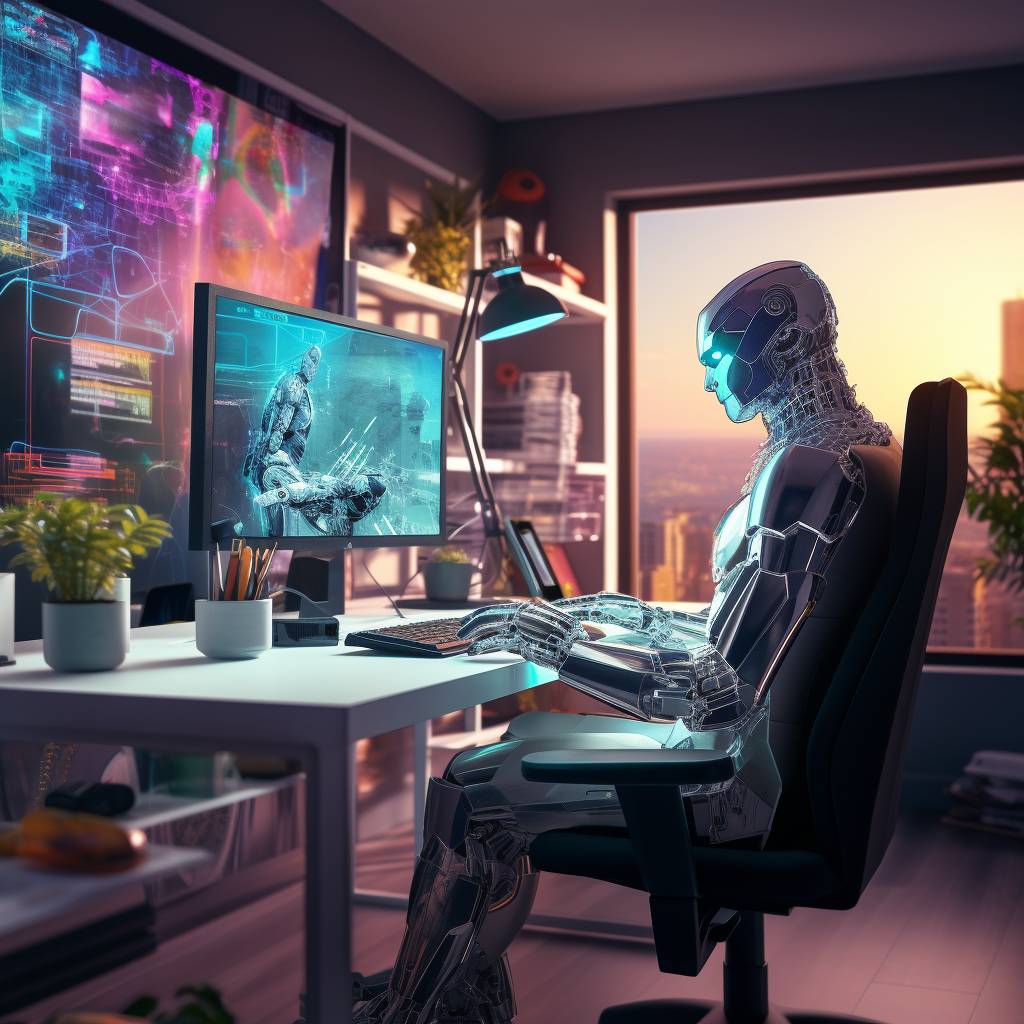
AI’s Rising Influence in Shaping The Future of Remote Work
Overload to a whole new level, with employees spending an average of 3 hours more per day in front of a screen. AI offers an escape from this digital deluge. The rise of AI-powered tools like ChatGPT, DALL-E, and Bing Chat is transforming the traditional workplace dynamics, especially in the wake of the remote work revolution triggered by the COVID-19 pandemic.
The pandemic-induced shift to remote work has evolved into a permanent change in the work structure. 40% of American workers have jobs that can be performed remotely, with a third working from home full-time and another 40% working remotely for the most part. This translates to 30% of the workforce spending a considerable part of their working hours outside traditional workspaces. The rapid transition from less than 3% remote workforce pre-pandemic to the present scenario is a testament to the dramatic change in work structures.
The geographical shift in workplaces is on a collision course with another significant transformation – who is performing the work. The new hybrid work model comprises a blend of onsite and remote employees and a mix of human and artificial intelligence colleagues. The next decade will be shaped by the dual challenges posed by these simultaneous transitions.
To discuss automation or AI’s impact on employment, one must first acknowledge how our perceptions about work and employment have been altered by the advent of remote work. Similarly, discussions about bringing employees back to the office or fostering culture and collaboration among distributed teams cannot ignore how AI is reshaping our daily working lives.
Remote work has paved the way for AI acceptance in several ways. A recent Pew survey revealed that only 14% of Americans have used ChatGPT, but among those who have tried it, 38% of users under 50 found it extremely or very useful, while another 39% found it somewhat useful.
Remote work has shifted perceptions about work as a social place. While isolation and reduced interaction with coworkers were once seen as drawbacks, 94% of employees in remote-capable jobs want to continue working remotely at least part-time, according to a 2022 Gallup survey. This shift towards hybrid and remote work has prepared us for collaboration with virtual AIs.
The past three years have seen a surge in ‘Zoom fatigue’, reflecting the exhaustion caused by constant virtual meetings. If we continue to rely on human-to-human interaction as the primary source of innovation, the remote environment may seem restrictive. AI offers a solution by providing an always-on, highly knowledgeable virtual colleague for brainstorming sessions, thereby offering a viable alternative for those missing the spontaneity and knowledge-sharing of physical workplaces.
For instance, if you’re looking for an innovative solution to improve your workspace while working remotely, you might invest in a “standing desk ” or in an “electric height adjustable standing desk”. These “best sit stand desks” not only offer health benefits but also contribute to creating an efficient home office setup.
The digital overload is another challenge that remote work has amplified. Employees are spending approximately three additional hours each day in front of screens, leading to increased stress and work-family conflicts. AI offers a solution to this problem too, by automating routine tasks and reducing screen time.
In conclusion, the rise of remote work and AI in workplaces is a testament to the evolving nature of work. As we navigate through these changes, it’s crucial to embrace AI as an ally rather than a threat and leverage its potential to create more efficient and balanced work environments.





